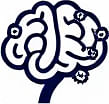Market Equilibrium as a Mental Model
 by Max Miller
by Max Miller
Market equilibrium offers a framework for understanding balance in economics and decision-making. This mental model helps professionals and learners apply concepts of supply and demand to everyday choices, fostering better cognitive strategies in business and personal growth.

Market equilibrium represents a state where supply and demand intersect, creating a balance that influences various aspects of life and work. In economics, this concept shows how prices stabilize when buyers and sellers reach agreement. For instance, market equilibrium occurs when the quantity supplied equals the quantity demanded, leading to efficient resource allocation.
This idea extends beyond economics into broader mental models that aid decision-making. People often use it to assess situations where competing forces must align. In business, leaders might apply this model to pricing strategies, ensuring products meet consumer needs without excess inventory. By recognizing patterns of balance, individuals can make more informed choices that promote stability.
Consider a simple example in everyday scenarios. A company producing goods might adjust output based on consumer interest. If demand rises, production increases until a new equilibrium forms. This process highlights how supply and demand interact dynamically, teaching us about adaptability in changing environments.
In psychology, equilibrium relates to cognitive balance, where mental states achieve harmony. Think about how people resolve internal conflicts by weighing options until a comfortable state emerges. This mental model encourages reflection on personal goals and external pressures, helping to maintain focus and reduce stress.
Applications in Business Strategies
Business strategies often rely on equilibrium to optimize operations. Companies analyze market data to predict trends and adjust plans accordingly. For example, during economic shifts, firms might recalibrate their offerings to match consumer behavior, ensuring long-term sustainability.
One practical approach involves using equilibrium to evaluate competitive landscapes. By mapping out rival actions, businesses can identify opportunities for growth. This method fosters a proactive mindset, where decisions are based on anticipated outcomes rather than reactive measures.
Cognitive Development Through Equilibrium
Equilibrium also plays a role in cognitive development, particularly in how we learn and adapt. As individuals encounter new information, they assimilate it into existing knowledge frameworks. This process mirrors the economic concept, where ideas reach a balanced state through integration and adjustment.
For lifelong learners, applying this model means regularly assessing and refining skills. It promotes a structured way to handle challenges, turning potential disruptions into opportunities for improvement. Through repeated application, people build resilience and enhance their problem-solving abilities.
Practical Tips for Using This Mental Model
To incorporate market equilibrium into daily life, start by identifying key variables in any situation. List factors like resources and constraints, then explore how they might balance out. This exercise can clarify paths forward in both professional and personal contexts.
Another tip is to practice scenario planning. Imagine different outcomes based on varying levels of input, such as adjusting budgets or workloads. Over time, this builds intuition for when systems are out of sync and need correction.
In team settings, encourage discussions around equilibrium to foster collaboration. Groups can use it to align goals, ensuring everyone contributes effectively without overload. This not only improves productivity but also supports a healthier work environment.
Real-World Examples
History provides clear illustrations of equilibrium in action. During market fluctuations, economies self-correct through price adjustments, demonstrating the model's reliability. Similarly, in innovation sectors, companies achieve success by balancing investment in research with market readiness.
On a personal level, individuals might use equilibrium to manage finances. By tracking income and expenses, one can maintain a stable budget, avoiding debt and promoting financial health. These examples underscore the versatility of the concept across disciplines.
Ultimately, embracing market equilibrium as a mental model equips us with tools for better decision-making. It encourages a balanced approach to challenges, blending analytical thinking with practical application. As we apply these principles, growth in cognitive abilities and professional skills follows naturally.
In conclusion, this model serves as a foundational tool for curious minds. By integrating it into routines, individuals and professionals can navigate decisions with greater confidence, leading to more effective outcomes in various pursuits.
